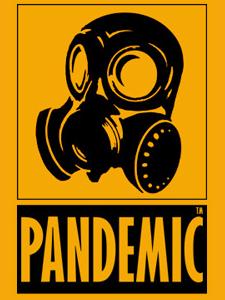Tag Archives: centers for disease control
GERM OUTBREAK AT CDC – Security lapses found at CDC bioterror lab in Atlanta
A federal bioterror laboratory already under investigation by Congress for safety issues has had repeated incidents of security doors left unlocked to an area where experiments occur with dangerous germs, according to internal agency e-mails obtained by USA TODAY. In one incident, an unauthorized employee was discovered inside a restricted area.
has had repeated incidents of security doors left unlocked to an area where experiments occur with dangerous germs, according to internal agency e-mails obtained by USA TODAY. In one incident, an unauthorized employee was discovered inside a restricted area.
A Centers for Disease Control and Prevention spokesman says the unsecured door incidents in 2010 and 2009 inside its Emerging Infectious Diseases Laboratory in Atlanta were “not an acceptable practice of the agency.” At no time, though, were bioterror organisms such as anthrax at risk of falling into the wrong hands, he said.
“The doors in question here are but one layer of multiple layers of security when it comes to both the animals and the agents that are worked on,” CDC spokesman Tom Skinner said. “The security measures we have in place, without going into detail, make it close to impossible for anyone who doesn’t have approved access to the agents to get their hands on them.”
The e-mails document doors being left unlocked in the building’s high-containment lab block, which includes an animal-holding area and Biosafety Level 3 labs where experiments are done on microbes that can cause serious or potentially fatal diseases and can be spread through the air. Anthrax, monkeypox, dangerous strains of influenza and the SARS virus are examples.
One e-mail by a CDC safety manager describes an unauthorized man discovered in the animal-holding area and multiple doors that were unsecured at the time. Skinner says the man was a CDC scientist but was not immediately able to provide further details about why he was in the restricted area. Skinner said the man was in an outer corridor of the BSL-3 suite of labs.
For safety and security, access to BSL-3 labs is restricted and they are supposed to have special airflow systems designed to help keep organisms inside. Problems with the airflow systems revealed by USA TODAY, including a February incident where air briefly blew out of a lab into a “clean” hallway, prompted the House Energy and Commerce Committee this week to launch a bipartisan investigation into safety issues. The committee is examining whether CDC — which inspects its own labs along with others nationwide that handle bioterror agents — is complying with federal safety requirements at the lab building, also known as CDC Building 18.
E-mails written by CDC Safety and Occupational Health manager Patrick Stockton indicate the lab has had security lapses that Rutgers University biosafety expert Richard Ebright said may be a “major violation” of security standards for labs that work with potential bioterror agents.
In a November 2009 e-mail, Stockton wrote to several CDC officials involved with Building 18’s high-containment laboratory area: “We are continuing to have some difficulties with doors remaining unsecured in the (high-containment lab) area. … If we continue to have issues, we will need to begin looking at individual access rights for these doors.” The particular issue involved expansion sections of the doors, used to accommodate large pieces of equipment. The “through-bolts are not being re-engaged, and the doors are remaining unsecured,” Stockton wrote.
Five months later, the expansion doors continued to be left unlatched and unsecured. According to an April 29, 2010, e-mail to more than a dozen CDC officials involved with the lab building, Stockton wrote that earlier that day “an individual with no access and no escort” was found in the research animal-holding area of the high-containment lab area.
The e-mail continued: “He did not have access and at this point we are not sure how he got there.” Stockton wrote that he talked to program and animal staff and “no one from their programs let this person in.” CDC’s Office of Security and Emergency Preparedness, which is a liaison to the Department of Homeland Security, was investigating, the e-mail said. Homeland Security officials did not respond to questions about the CDC security incidents.
Stockton’s e-mail says that after the incident he and the building’s high-containment lab manager, Anthony Sanchez, walked the entire high-containment block and found two doors unsecured. “This can certainly happen by mistake on occasion but we have addressed this issue in the past and now it seems to be a common failure point. … It is imperative that all doors leading to high containment remain secured,” Stockton wrote.
Stockton and Sanchez didn’t grant interviews. CDC spokesman Skinner said: “Doors being left open by staff is not a standard practice. It’s unacceptable, and our safety office has sent out numerous reminders to staff of the importance of staff practicing good physical security.”
Skinner said he is unaware of any other door security incidents after the one in April 2010. He emphasized that multiple layers of security in the building would have prevented any unauthorized person from accessing germs that hold the potential to be used as bioterror weapons. “The bottom line is, worker safety and the public safety were never compromised,” he said.
Ebright, of Rutgers University, expressed concern about the repeated issues revealed in news reports about Building 18 since the $214 million building opened in 2005, including articles in 2007 about backup generators that failed to keep airflow systems working during a power outage, and in 2008 about a high-containment lab door that the CDC sealed with duct tape after an incident where an airflow system malfunctioned and sent potentially contaminated air into a “clean” corridor.
The “documents you have obtained over the past several years make it clear that there has been a pattern of corner-cutting and negligence at CDC biocontainment facilities —starting with the failure to include provisions for emergency backup power, and encompassing inadequate door seals, improper airflow, jury-rigged repairs, and unsecured access points,” Ebright said.
If the security issues described in Stockton’s 2010 e-mail continue and bioterror agents are being used in that area, Ebright said, “then heads should fall.”
The CDC currently is responsible for inspecting the safety and security of its labs that work with bioterror agents. Skinner said CDC has a 66-year record of operating its labs safely.
The CDC said this week, in the wake of USA TODAY’s reports, that it is considering having its labs’ safety reviewed by an outside agency, such as the U.S. Army Medical Research Institute for Infectious Diseases (USAMRIID).
Biosafety and biosecurity concerns have been the subject of previous congressional concerns. A 2009 report by the U.S. Government Accountability Office, the investigative arm of Congress, examined the potential risks posed by the growing number of high-containment labs doing research on potential bioterror agents. It found that while lab accidents are rare, they do occur, primarily because of human error and systems failures.
It also noted that insiders working in the labs can pose risks, pointing to the Federal Bureau of Investigation‘s allegation that Bruce Ivins, a scientist at USAMRIID in Fort Detrick, Md., was the “sole culprit” in the 2001 anthrax attacks. While he was under investigation in 2008, Ivins died of a drug overdose.
“There are arguably two aspects to insider risk: the motive of the insider and the ability to misuse material and laboratory facilities,” the GAO wrote in its report.
CDC visitors exposed to deadly germs?
 Washington (CNN) — It’s a highly secured, sophisticated research lab studying deadly diseases such as bird flu, monkeypox, tuberculosis and rabies.
Washington (CNN) — It’s a highly secured, sophisticated research lab studying deadly diseases such as bird flu, monkeypox, tuberculosis and rabies.
It’s in a facility called Building 18, which cost taxpayers $214 million.
And now, the Biosafety Level 3 lab at the Centers for Disease Control and Prevention in Atlanta is also the subject of a congressional investigation after a potentially dangerous airflow leak at that lab, CNN has learned.
The leak occurred on February 16, when air flowed the wrong way out of a germ lab into a clean-air corridor, rather than through the powerful HEPA filter that cleans the air, congressional sources and CDC officials said. Visitors touring the facility were in the clean corridor when they observed a puff of air being pushed out from the lab through a slot in a door window.
CNN recommends: Deadly bird flu could become airborne
If experiments had been under way at the time of that air leak, experts say, unprotected visitors could have been exposed to deadly germs, although an epidemic would have been unlikely.
According to U.S. Rep. Michael Burgess, a Texas Republican and a medical doctor, the House Energy and Commerce Committee has asked the CDC for documents about that incident. The request came in the wake of a report on internal CDC e-mails about the incident, first reported by USA Today last week.
“The biggest concern was that there was a contingent of visitors who were walking through the building,” Burgess said. “And had one of those people been stricken or made ill or worse, obviously that would have been devastating.”
The lab handles small mammals such as rats, ferrets and mice as part of its experiments with pathogens, according to CDC officials. They say animals were in the lab at the time of the air leak, but they were secured in filtered cages.
CDC officials say the lab was clean, was not active at the time, and no one got infected.
“At no time during recent incidents featured in the media were CDC workers or the public in harm’s way,” agency spokesman Tom Skinner said. “This unique facility features multiple security layers specifically designed to protect workers and the public in the event of an incident.”
In a statement released to CNN, Burgess’ committee said, “We will actively work to find out if there are additional concerns or incidents associated with Building 18. Any anomaly or breach is of concern, and we will work to ensure the integrity of the facility is maintained and that our scientists are safe.”
There has been at least one other safety-related incident in that same building where February’s air leak occurred.
In 2008, it was discovered that a high-containment lab door was sealed with duct tape. That incident was first reported by the Atlanta Journal-Constitution and confirmed to CNN by Skinner.
Robert Hawley, former safety chief at the U.S. Army Medical Research Institute of Infectious Diseases, said the CDC has many safety layers in place at its labs. Hawley says researchers at the Biosafety Level 3 lab work in biosafety “cabinets” within the lab itself.
“Nothing is handled outside that cabinet,” Hawley said. “So they’re working with minute amounts of material, and the chances of aerosol are negligible.”
But there are questions about a possible cover-up.
In an internal e-mail, reported by USA Today, CDC biologist Kismet Scarborough said the centers “… will do anything … to hide the fact that we have serious problems with the airflow and containment in this whole building.”
CNN has not been able to independently verify that e-mail. But in response, Skinner said, “CDC will continue to take an open, transparent and inclusive approach to address any safety challenge in a manner that will ensure the safety of our workforce and the public.”
Skinner said the agency “intends to cooperate fully with Rep. Burgess and the committee to address any questions they may have about Building 18 at CDC.”
Best Car to Survive a Zombie Apocalypse
-
 Conquest Vehicles
Conquest Vehicles
Now that the Centers for Disease control has warned Americans to prepare for a possible “Zombie Apocalypse,” it may be a good time to rethink your upcoming automobile purchase.
If Hollywood has thought us anything over the years it’s that, while they are very susceptible to baseball bats, zombies are adept at jumping on cars and breaking through their windows in order to eat the brains of their occupants. Not to fear, there’s one vehicle that should keep your noggin intact.
The Knight XV from Conquest Vehicles wasn’t designed with the undead in mind (at least we don’t think that it was) but the mega-SUV is perfectly suited to the task at rotting hand. About twice the size of your typical HUMMER, the fully-armored truck could likely survive an assault by Team 6, let alone cracked fingernails.
Its opaque bullet-proof glass will keep you out of sight of glazed-over eyes, while ballistic run-flat tires should have no problem driving over the unkempt, bone-strewn streets of your town. It even runs on bio-diesel, so when the supplies run dry you can make your own fuel. Night-vision surveillance cameras and an external listening device serve as an early warning system and a high-power roof-mounted spotlight is just the ticket in case a few vampires find their way into the mix. Hey, you never know.
Granted, the price of survival is high at $300,000, but that’s about how much a three-bedroom costs in Pittsburgh – the location of “Night of the Living Dead” – and you won’t need one if you drive one of these. Its interior is upholstered in leather and Wilton Wool, comes with a flat-screen TV, refreshment bar and satellite TV to pick up the signal from any other survivors who might be out there.
Unfortunately, there’s no bathroom, so good luck with that. But it does come with a cigar humidor so you can live the good life to the fullest while you’re still alive. Hurry up, though, only 100 will be made and you don’t want to be the one stuck driving around in a convertible.
Colbert: Zombies Are Intellectual Elites – ‘All They Care About Is Braiiiiiiins’
 College student eating a housemate’s heart? Homeless man eating another homeless man’s face? Porn star sending body parts to government members? “Cannibalism is the hot new trend,” observed Stephen Colbert on last night’s Colbert Report. “And you thought saggy pants were annoying.” The recent spate of these freak incidents in the news has wide swathes of the American public convinced we have a zombie apocalypse on our hands. “It does make one wonder,” Colbert said. “After all, something has clearly eaten [Fox News host] Trace Gallagher’s brain.”
College student eating a housemate’s heart? Homeless man eating another homeless man’s face? Porn star sending body parts to government members? “Cannibalism is the hot new trend,” observed Stephen Colbert on last night’s Colbert Report. “And you thought saggy pants were annoying.” The recent spate of these freak incidents in the news has wide swathes of the American public convinced we have a zombie apocalypse on our hands. “It does make one wonder,” Colbert said. “After all, something has clearly eaten [Fox News host] Trace Gallagher’s brain.”
So it came as a relief when the federal Centers for Disease control on June 1 told the Huffington Post that “CDC does not know of a virus or condition that would reanimate the dead (or one that would present zombie-like symptoms).” Colbert was not buying it, though, especially in light of a (tongue-in-cheek”) CDC “zombie awareness” campaign last year. “It makes sense that zombies would be attracted to science,” he said. “I mean, they’re intellectual elites. All they care about is braaaaaiiiiiinnnnns.”
OUR GOVERNMENT IS LYING – CDC denies rumors of zombie apocalypse
CDC denies rumors of zombie apocalypse
With reports of flesh-eating coming in from across the nation, rumors of a possible zombie outbreak are spreading on the Internet — but do you really have anything to worry about?
 Photo: Nemanja Jovanovic/AFP
Photo: Nemanja Jovanovic/AFP